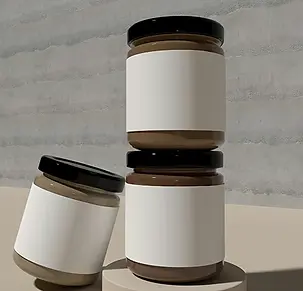Labels and Adhesives

How Labels and Adhesives Affect Plastic Recycling
Labels and adhesives can significantly impact the recycling process by contaminating plastic streams, reducing material quality, and complicating sorting and processing.
1. Issues Caused by Labels & Adhesives in Recycling
- Contamination: Labels, inks, and adhesives can mix with the plastic during processing, degrading the quality of the recycled material.
- Sorting Challenges: Non-recyclable labels can prevent proper identification of plastic types.
- Residue Formation: Some adhesives do not fully dissolve or separate, leaving sticky residues that affect the melting process.
- Processing Difficulties: Adhesives can clog machinery and create inconsistencies in the final recycled product.
2. How Labels & Adhesives Are Removed
To ensure high-quality recycled plastic, the following steps are used to remove labels and adhesives:
✅ Mechanical Separation✅ Washing & Chemical Removal✅ Floating & Sink Process✅ Adhesive Selection3, What can consumers do?: Best Practices for Improving Recyclability
Some labels (like shrink sleeves) are manually or automatically removed before shredding.
Air classification or flotation techniques separate lightweight labels from heavier plastic.
Plastics undergo hot water or chemical washing to dissolve adhesives.
Caustic soda (alkaline solution) or surfactants break down adhesives for easier removal.
After shredding, plastic flakes are placed in water where different materials separate based on density.
Labels often float while heavier plastic sinks, allowing separation.
Water-soluble adhesives (e.g., pressure-sensitive adhesives designed for easy removal) improve recyclability.
Hot-melt adhesives with low melting points allow better separation.
Use wash-off labels that detach in hot water (common in PET bottle recycling).
Avoid permanent adhesives that do not dissolve in water-based recycling processes.
Use laser-etched markings instead of printed labels to eliminate contamination.
Design with compatible materials so labels do not interfere with the plastic’s recyclability.
References:
Contamination and Residue Formation:
Hopewell, J., et al. (2009). "Plastics recycling: challenges and opportunities." Philosophical Transactions of the Royal Society B: Biological Sciences, 364(1526), 2115-2126. Link
Pivnenko, K., et al. (2015). "Material cycles and chemicals: challenges in recycling plastic waste." Environmental Science & Technology, 49(10), 6440-6455. Link
Mechanical Separation and Washing:
Song, Y., et al. (2009). "Recycling technologies for primary and secondary materials in electronic waste." Environmental Engineering Science, 26(2), 251-263. Link
Ragaert, K., et al. (2017). "Recycling of multilayer plastic packaging materials: A review." Waste Management, 69, 24-58. Link
Adhesive Selection and Best Practices:
European PET Bottle Platform (EPBP). "Design for recycling guidelines." Link
WRAP (Waste and Resources Action Programme). "Recyclability by Design." Lin

